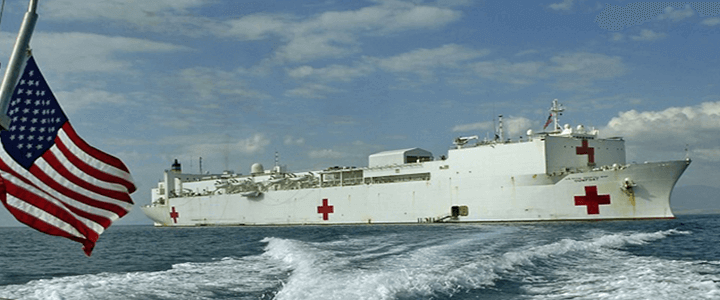In August, I wrote of how the United States Naval Ship Comfort was scheduled to sail for South America on an 11-week humanitarian mission. On October 17, she transited the Panama Canal en route to her first mission in Ecuador. The Navy told Daily Intel that normally, the ship’s crew would take 18 months to plan a mission like this. In this case, they had barely a month.
“Enduring Promise” is the name of the U.S. Southern Command’s wider mission across Central and South America. As part of that mission, the Comfort will visit Ecuador, Peru, Honduras, and Colombia to alleviate the strain on local medical systems. In Colombia in particular, floods of refugees from neighboring Venezuela have overwhelmed the country’s medical capacity. The Comfort’s 1,000 beds and full compliment of medical personnel can provide on-the-spot assistance like no other U.S. operation.
new opportunities in ecuador
The ship is currently in Peru, but Ecuador is the more interesting stop. This time last year, the mission might not have been possible. Under the leadership of former President Rafael Correa, Ecuador was much more aligned with the regime of Venezuelan socialist strongman Nicolás Maduro. But last April, Ecuadoran’s elected Lenin Moreno and the country unexpectedly began moving away from Venezuela and opened itself up to warmer relations with the U.S.
Vice President Mike Pence celebrated these renewed ties in a visit to the capital of Quito in June, setting the stage for the current mission. Pence is the highest ranking American official to visit Ecuador since secretary of state George Shultz attended the inauguration of President Rodrigo Borja in 1988. President Herbert Hoover’s December 1928 trip remains the only time an American president has visited the country.
Ecuador has quietly been a leftist country for a long time. In 1987, then-President León Febres, facing mounting pressure from the legislature, abruptly ended a U.S. military civic action project known as Operation Blazing Trails. The operation saw soldiers from the Army Reserve—and for the first time in South America, the Army National Guard—deploy to rebuild infrastructure in a western region heavily damaged by a March 1987 earthquake. But the Reagan administration’s policy of aiding the Nicaraguan contra rebels fighting the communist Sandinista regime was too toxic for many South American leaders, and the U.S. had to end to program.
the purpose of u.s. humanitarian missions
Military civic action programs are a classic example of the “soft power” efforts the U.S. military does very well, even if with somewhat less domestic fanfare than combat. The missions serve three purposes: they give military units, particularly engineer and medical units, the chance to put their skills to work; they provide local civilian populations with much-needed infrastructure or medical care; and they promote U.S. foreign policy by demonstrating goodwill.
It is easy, especially in the developing world, to gain an unrealistic view of how American forces behave. It it quite another to interact with a smiling U.S. service member who is treating your sick child. Such interactions are essential to the promotion of U.S. interests, and the Comfort and her crew represent one of the the finest and highest visibility examples of this application of soft power.
During her time in Ecuador from October 22 to 26, the Comfort treated 4,005 medical, dental, and optometry patients, and performed 81 surgeries. (For those, like me, who are bad at math, that comes out to an average of 16.2 surgeries per day). That equates, in the best of all worlds, to 4,005 people, plus their family members and neighbors, who learned first-hand that the U.S. is not, as the late Venezuelan dictator Hugo Chavez once accused, “the biggest menace to our planet.”
Bravo zulu.




